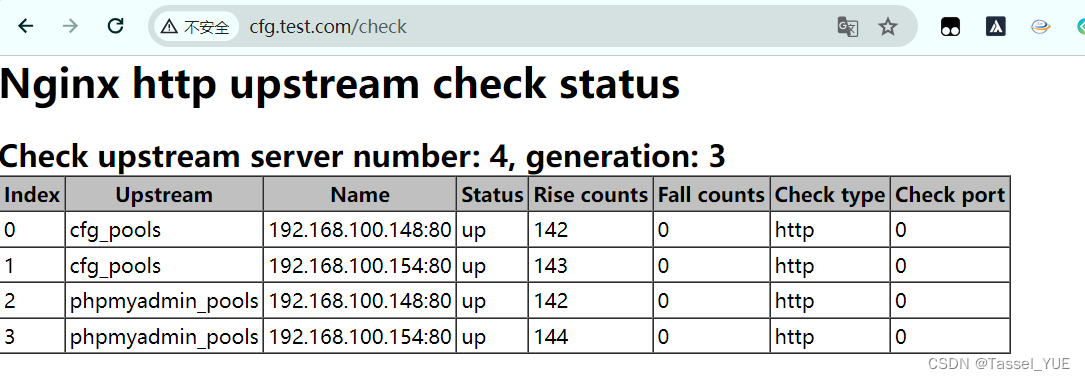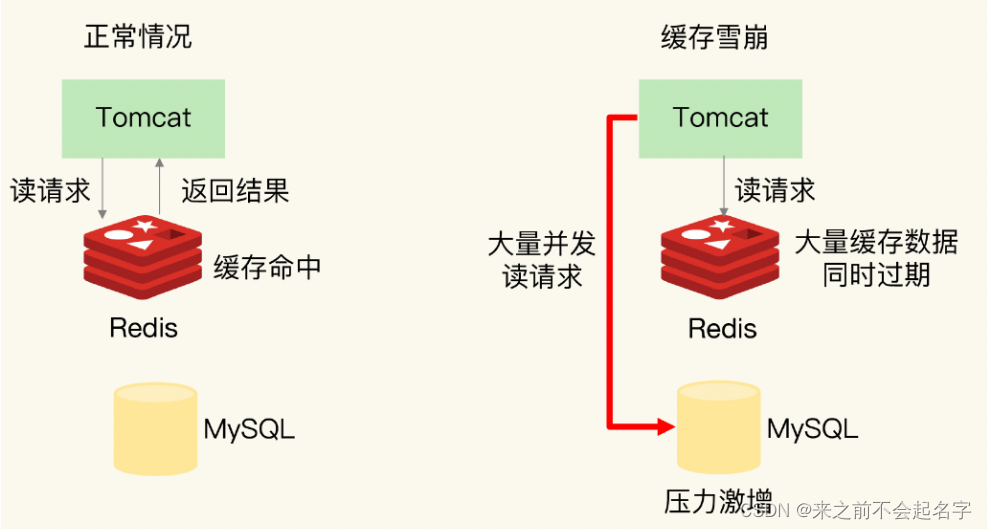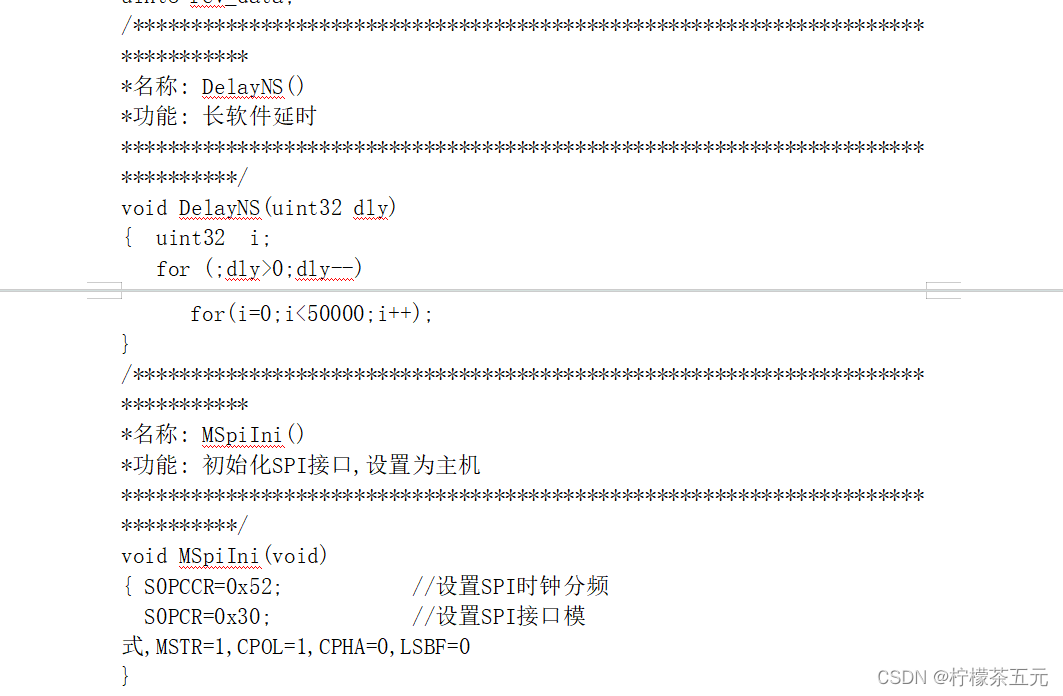目录
- 写在前面
- Nginx05
- Nginx 负载均衡(upstream模块)
- 概述
- 常见选择
- 负载均衡和反向代理的区别
- Nginx负载均衡的方式
- Nginx运行状况检查
- 备份服务器
- Nginx upstream模块选项说明
- 实验1 负载均衡两台front
- front配置
- lb01配置
- 测试
- 流程梳理
- 实验2 LNMP+NFS小实验
- NFS配置
- DB配置
- front配置
- front01
- front02
- lb配置
- 验证
- 实验3 会话保持小实验(Redis+phpMyAdmin)
- 什么是会话保持
- cookie和session
- F12查看cookie
- 会话保持方案
- DB配置
- front配置
- redis配置(db01上安装)
- 修改php配置(front主机上配置)
- lb配置
- 测试
- 实验4 负载均衡状态检查小实验
- 安装tengine
- 健康检查模块upstream-check配置
- 实验5 Nginx平滑升级小实验
写在前面
这是Nginx第五篇,内容为Nginx负载均衡详解、LNMP+NFS、会话保持、负载均衡状态检查upstream-check、平滑升级等。
上篇笔记 Nginx04-Nginx代理、反向代理实验、LNMP流程详解与排错思路
Nginx05
在nginx中,可以通过
$http_头字段的方式取出想要的内容,例如:
X-Forwarded-For:$http_x_forwarded_forX-Real-IP:$http_x_real_ipHost:$http_host
Nginx 负载均衡(upstream模块)
官方文档:https://nginx.org/en/docs/http/ngx_http_upstream_module.html#upstream
Nginx 以高并发、低消耗而闻名,这个特点使其很适合作为一个负载均衡器 (Load Balancer),有策略地分发请求给不同的后端服务器。避免单点故障之余,亦增强整个系统的可用性,简单说不容易宕机。负载均衡是反代的其中一个用途。
Nginx的负载均衡利用到了proxy和upstream模块
概述
常见选择
| 选型 | 选择 |
|---|---|
| 硬件 | F5, A10 |
| 软件 | Nginx, Tengine, Openresty(内置lua), Haproxy(专业负载), LVS(高性能) |
| 公有云服务 | SLB, CLB |
负载均衡和反向代理的区别
一般来说nginx的负载均衡是利用到反向代理的特性,但如果非要深究二者的区别时,则一般不是指用nginx负载均衡,而是lvs 这一类专门的负载均衡服务
| 内容 | 共同点 | 区别 | 服务 |
|---|---|---|---|
| 负载均衡 | 用户的请求分发到后端节点上. | 用户->lb(lvs,不是nginx)->web lb负载均衡做的是数据转发,不会产生新的请求. 1个请求1个响应 | lvs |
| 反向代理 | 用户的请求分发到后端节点上. | 中间有个中介,用户->nginx反向代理(proxy)->web 2个请求2个响应.代理代替用户去找web服务器. | nginx/tengine/openresty/haproxy |
Nginx负载均衡的方式
| 负载 | 说明 |
|---|---|
| rr轮询 | round robin 轮询,默认的循环访问。 |
| wrr 加权轮询 | 在轮询的基础上增加权重功能。server中 weight就是加权轮询。 |
| ip_hash | ip哈希,只要客户端ip一样,就会一直访问同一个后端节点。(用户请求与web服务器绑定。)解决会话保持/会话共享。可能导致负载不均。 |
| xxx_hash | url_hash,只要用户访问的url相同/uri相同,就访问相同的web服务器。缓存服务器:静态资源缓存。 |
| least_conn | 最小连接数,lc算法。也可以配合上权重 weight,wlc权重的最小连接数。 |
| 一致性哈希算法 | consistent hash,根据请求的哈希值将请求分发到后端服务器,主要用于缓存场景,可以在服务器集群中保持缓存的一致性,减少缓存失效的次数。 |
- 轮询 (round-robin)(默认)
upstream 名字{
server xxx;
server yyy;
server zzz;
}
- 最小连接 (least-connected)
upstream 名字{
least_conn;
...
}
- 源地址哈希 (ip-hash):用于跟踪用户操作,涉及身份认证时 (用户系统)
upstream 名字{
ip_hash;
...
}
- url-hash:
upstream 名字{
hash $request_uri;
...
}
- 加权负载均衡 (Weighted Load Balancing):设置权重,根据服务器性能,而不是单纯的连接数
upstream 名字{
server xxx weight 10;
server yyy weight 5;
server zzz;
}
Nginx运行状况检查
根据 Nginx 的文档,max_fails 缺省值是 1,fail_timeout 缺省值是 10s。
如下,www.example.com 的健康检查会被关闭,一直都标记为可用;www2.example.com 连不上时先重试 2 次,如果还不行就退出服务,下线 1 天,方便运维人员排障。
upstream backend {
server www.example.com max_fails=0;
server www2.example.com max_fails=2 fail_timeout=1d;
}
备份服务器
- down指的是,在负载均衡选择服务器时,不会考虑该主机
- backup指的是,在别的服务器都失效后,启用该服务器
upstream 名字{
server xxx;
server yyy down;
server yyy backup;
}
Nginx upstream模块选项说明
| server后面可以加的选项 | 说明 | 应用场景 |
|---|---|---|
| weight | 权重,根据权重ngx分配请求。 | 如果web服务端配置不同,1c2g,2c8g。代码更新与测试的时候,给测试服务器较小的权重。 |
| max_fails | ngx具备一些健康检查功能,指定失败的次数,超过这个次数就认为节点挂了。 | 一般情况下可以设置1-3即可。不太重要,缓存业务,可以设置为10。 |
| fail_timeout | 认为节点挂了后间隔多久再次检查健康情况。默认是10s。 | 根据要求设置时间即可,可以长一些。30/60s。 |
| backup | 备份服务器,其他所有服务器都挂了的时候,才启用。 | 使用的时候需要考虑雪崩的情况。 |
实验1 负载均衡两台front
front配置
两台主机配置一致,这里仅展示一台
[root@front02 conf.d]# cat cfg.test.com.conf
server {
listen 80;
server_name cfg.test.com;
root /app/code/cfg;
error_log /var/log/nginx/cfg-error.log notice;
access_log /var/log/nginx/cfg-access.log main;
location / {
index index.html;
}
}
[root@front02 conf.d]# mkdir -p /app/code/cfg
[root@front02 conf.d]# echo front02 > /app/code/cfg/index.html
lb01配置
[root@lb01 conf.d]# cat cfg.test.com.conf
#upstream定义一个上游组,name全局唯一
upstream cfg_pools {
server 192.168.100.148:80;
server 192.168.100.154:80;
}
#upstream和server同级
server {
listen 80;
server_name cfg.test.com; #使用文件中定义的上游组
error_log /var/log/nginx/cfg-error.log notice;
access_log /var/log/nginx/cfg-access.log main;
location / {
proxy_pass http://cfg_pools;
proxy_set_header Host $http_host;
proxy_set_header X-Real-IP $remote_addr;
proxy_set_header X-Forwarded-For $proxy_add_x_forwarded_for;
}
}
测试
#多次curl,可以发现出现的网页分别是两台front设置的内容
C:\Users\14765>curl -H Host:cfg.test.com http://192.168.100.153
front01
C:\Users\14765>curl -H Host:cfg.test.com http://192.168.100.153
front01
C:\Users\14765>curl -H Host:cfg.test.com http://192.168.100.153
front02
C:\Users\14765>curl -H Host:cfg.test.com http://192.168.100.153
front01
C:\Users\14765>curl -H Host:cfg.test.com http://192.168.100.153
front02
流程梳理
- 用户请求host为proxy.test.com,ip实际是lb01的ip
- 请求到达lb01,lb01匹配请求的对应server的server_name和listen,location匹配到uri后,proxy转发规则为upstream组。
根据upstream模块的server和负载规则,选择其中一台sever,根据proxy模块的转发规则,转发到对应的front主机上 - front主机处理请求,返回给lb01,lb01返回给用户
实验2 LNMP+NFS小实验
- 将nginx的站点目录存放到nfs上
- 需要注意统一用户(nginx、php、nfs),建议新建用户,修改对应的配置文件内容。/etc/nginx/nginx.conf、/etc/php-fpm.d/www.conf
- 需要放nfs的绝对路径是/app/code/blog/wp-content/uploads - 多front场景下,第二台wordpress会提示删除数据库内容
- 第一台完成的wordpress,将站点目录打包scp到其他的front上
NFS配置
# 先创建用户
useradd -u 1999 -s /sbin/nologin -M www
id www
uid=1999(www) gid=1999(www) groups=1999(www)
[root@storage ~]# tail -1 /etc/exports
/nfs/wordpress 192.168.100.0/24(rw,all_squash,anonuid=1999,anongid=1999)
[root@storage ~]# mkdir -p /nfs/wordpress
[root@storage ~]# chown www.www /nfs/wordpress/
systemclt reload nfs-server
DB配置
[root@db01 ~]# mysql -uroot -p
MariaDB [(none)]> create database wordpress;
MariaDB [(none)]> grant all on wordpress.* to 'wordpress'@'192.168.100.%' identified by 'wordpress';
MariaDB [(none)]> select user,host from mysql.user where user='wordpress';
+-----------+---------------+
| user | host |
+-----------+---------------+
| wordpress | 192.168.100.% |
+-----------+---------------+
MariaDB [(none)]> show databases;
+--------------------+
| Database |
+--------------------+
| wordpress |
+--------------------+
front配置
front01
- 新建用户并修改nginx和php的用户
useradd -u 1999 -s /sbin/nologin -M www
id www
uid=1999(www) gid=1999(www) groups=1999(www)
[root@front ~]# grep 'user' /etc/nginx/nginx.conf
user www;
[root@front ~]# egrep '^user|^group' /etc/php-fpm.d/www.conf
user = www
group = www
- 子配置文件
[root@front ~]# cat /etc/nginx/conf.d/blog.test.com.conf
server {
listen 80;
server_name blog.test.com;
root /app/code/blog;
error_log /var/log/nginx/blog.test.com-error.log notice;
access_log /var/log/nginx/blog.test.com-access.log main;
location / {
index index.php;
}
location ~* \.php$ {
# foward to php
fastcgi_pass 127.0.0.1:9000;
fastcgi_index index.php;
fastcgi_buffering on; #开启缓冲
fastcgi_buffers 64 64K; #缓冲调大成64个64K
# 修改以下
fastcgi_param SCRIPT_FILENAME $document_root$fastcgi_script_name;
include fastcgi_params;
}
}
[root@front ~]# systemctl restart nginx php-fpm
- 挂载
mkdir -p /app/code/blog/wp-content/uploads
mount -t nfs 192.168.100.150:/nfs/wordpress /app/code/blog/wp-content/uploads/
- 解压wordpress并安装wordpress
#解压wordpress并上传到站点目录
[root@front ~]# unzip wordpress-6.1.1.zip
[root@front ~]# mv wordpress/* /app/code/blog/
[root@front ~]# chown -R www.www /app/code/blog/
# 安装不再演示,可查看我的之前笔记Nginx03
#安装实际就是在站点目录中创建了一个wp-config.php的文件
- 打包目录,排除上传目录
[root@front blog]# tar zcf ~/wp-no-uploads.tar.gz --exclude=./wp-content/uploads/* .
[root@front blog]# tar tf ~/wp-no-uploads.tar.gz | grep uplaods
front02
- 新建userid=1999的www用户,并修改nginx和php配置文件用户(如上)
- 安装环境nginx、php、nfs(略)
- 子配置文件(从front01 copy过来)
- 从front01 scp过来目录代码
#scp
[root@front blog]# scp /root/wp-no-uploads.tar.gz front02:`pwd`
#front02解压
[root@front02 blog]# tar xvf wp-no-uploads.tar.gz
- 挂载(和1相同)
lb配置
- 子配置文件
[root@lb01 conf.d]# cat blog.test.com.conf
upstream blog_pools {
server 192.168.100.148;
server 192.168.100.154;
}
server {
listen 80;
server_name blog.test.com;
location / {
proxy_pass http://blog_pools;
proxy_set_header Host $http_host;
proxy_set_header X-Forwarded-For $proxy_add_x_forwarded_for;
}
}
[root@lb01 conf.d]# nginx -t
nginx: the configuration file /etc/nginx/nginx.conf syntax is ok
nginx: configuration file /etc/nginx/nginx.conf test is successful
[root@lb01 conf.d]# systemctl reload nginx
验证
浏览器访问blog.test.com,hosts以提前修改为lb的ip
抓包结果如下:

实验3 会话保持小实验(Redis+phpMyAdmin)
什么是会话保持
用户的请求可能涉及到会话保持(登陆密码、个性信息等),若在负载时将后续内容分配给多个服务器,会导致这些消息不同步。因此需要用到会话保持,去保证一个用户的需要保持会话的内容都会负载到同一台服务器中。
cookie和session
| 技术点 | 共同点 | 区别 | 其他 |
|---|---|---|---|
| cookie | 存放用户的信息,登录信息 | 存放在客户端浏览器 | 服务器给客户端响应,进行设置set-cookie,未来再次访问携带者cookie访问服务端 |
| session | 存放用户的信息,登录信息 | 存放在服务端(文件,数据库,。。。) | 浏览器cookie与服务端的session对应 |
F12查看cookie

会话保持方案
- 登陆状态写入cookie
- cookie+session方式 + 统一存放session服务器(会话保持服务器)
- 认证服务实现Oauth 2.0(token方式)
- ip_hash方式
- redis实现phpmyadmin/kodbox会话共享
- 部署:phpMyAdmin,web页面版本的数据库管理工具. SQL语句. PHP代码.
- 只需要ngx+php,不需要创建库,添加用户(权限大).
- 流程:
- db: phpmyadmin用户,权限大一些.
- web: 部署代码,传输到另外一个web上
- 准备redis环境(db01)
- 修改php配置(创建新的端口)
- 接入负载均衡.访问与测试
DB配置
db准备phpmyadmin的用户
grant all on *.* to 'phpmyadmin'@'192.168.100.%' identified by 'phpmyadmin';
front配置
部署phpmyadmin代码,传输到另外一个web上
官网:phpmyadmin.net
- 子配置文件
#vim 直接替换 :%s#blog#phpmyadmin#g
[root@front ~]# cat /etc/nginx/conf.d/phpmyadmin.test.com.conf
server {
listen 80;
server_name phpmyadmin.test.com;
root /app/code/phpmyadmin;
error_log /var/log/nginx/phpmyadmin.test.com-error.log notice;
access_log /var/log/nginx/phpmyadmin.test.com-access.log main;
location / {
index index.php;
}
location ~* \.php$ {
# foward to php
fastcgi_pass 127.0.0.1:9000;
fastcgi_index index.php;
fastcgi_buffering on;
fastcgi_buffers 64 64K;
# 修改以下
fastcgi_param SCRIPT_FILENAME $document_root$fastcgi_script_name;
include fastcgi_params;
}
}
- 创建目录并解压文件到站点目录
[root@front ~]# mkdir -p /app/code/phpmyadmin
#以上传好软件包
[root@front ~]# unzip phpMyAdmin-5.2.1-all-languages.zip
[root@front ~]# mv phpMyAdmin-5.2.1-all-languages/* /app/code/phpmyadmin/
- 重启服务
[root@front ~]# nginx -t
nginx: the configuration file /etc/nginx/nginx.conf syntax is ok
nginx: configuration file /etc/nginx/nginx.conf test is successful
[root@front ~]# systemctl reload nginx
- 修改/var/lib/php/session属主
测试发现,会报错permission denied。出现在无法阅读session数据:/var/lib/php/session
[root@front ~]# chown -R www.www /var/lib/php/session/
- 手动创建连接数据库的配置文件
cp config.sample.inc.php config.inc.php
grep -wn host config.inc.php
30:$cfg['Servers'][$i]['host'] = '192.168.100.152';
- 登陆测试


- front02 由front01 根据上述操作scp即可
[root@front code]# pwd
/app/code
[root@front code]# scp -r phpmyadmin/ front02:`pwd`
[root@front code]# cd /etc/nginx/conf.d/
[root@front conf.d]# scp phpmyadmin.test.com.conf front02:`pwd`
[root@front02 wp-content]# chown -R www.www /var/lib/php/session/
redis配置(db01上安装)
yum install -y redis
#修改/etc/redis.conf
bind 127.0.0.1 192.168.100.152 #redis默认本地访问,可以通过bind,以192.168.100.152访问redis
systemctl enable --now redis
ss -luntp |grep redis
ps -ef | grep redis
修改php配置(front主机上配置)
- 创建新的php子配置文件(www.conf->session.conf)
#复制一个新的文件
[root@front conf.d]# cp /etc/php-fpm.d/www.conf /etc/php-fpm.d/session.conf
# 编辑配置文件,修改名字、监听端口、session存储路径
[root@front conf.d]# cat /etc/php-fpm.d/session.conf
; 修改此行
[session]
user = www
group = www
; 修改此行
listen = 127.0.0.1:9001
listen.acl_users = apache,nginx
listen.allowed_clients = 127.0.0.1
pm = dynamic
pm.max_children = 50
pm.start_servers = 5
pm.min_spare_servers = 5
pm.max_spare_servers = 35
slowlog = /var/log/php-fpm/www-slow.log
php_admin_value[error_log] = /var/log/php-fpm/www-error.log
php_admin_flag[log_errors] = on
; 修改此行
php_value[session.save_handler] = redis
; 修改此行
php_value[session.save_path] = tcp://192.168.100.152:6379
php_value[soap.wsdl_cache_dir] = /var/lib/php/wsdlcache
- 修改nginx子配置文件,修改fastcgi_pass 端口为9001(front01和02都需要修改)
[root@front02 code]# grep 9001 /etc/nginx/conf.d/phpmyadmin.test.com.conf
fastcgi_pass 127.0.0.1:9001;
- 配置文件传给front02
[root@front php-fpm.d]# pwd
/etc/php-fpm.d
[root@front php-fpm.d]# scp session.conf front02:`pwd`
lb配置
[root@lb01 conf.d]# cat phpmyadmin.test.com.conf
upstream phpmyadmin_pools {
server 192.168.100.148;
server 192.168.100.154;
}
server {
listen 80;
server_name phpmyadmin.test.com;
location / {
proxy_pass http://phpmyadmin_pools;
proxy_set_header Host $http_host;
proxy_set_header X-Forwarded-For $proxy_add_x_forwarded_for;
}
}
测试
测试前,确保front、lb的服务已重启(nginx、php-fpm);db的redis已启动
在redis中查看
redis-cli
keys *
实验4 负载均衡状态检查小实验
负载均衡状态检查模块-upstream check模块
yum安装的nginx没有这个模块,可以用tengine生成命令后替换即可。
tengine官网:tengine.taobao.org/download.html
本文中使用2.4.1
安装tengine
找一台没有nginx的服务器
- 提前上传好tengine-2.4.1.tar.gz
# 提前上传好tengine-2.4.1.tar.gz
[root@db01 ~]# ls
anaconda-ks.cfg tengine-2.4.1.tar.gz
# 没有安装nginx
[root@db01 ~]# rpm -qa | grep nginx
- 解压
## 解压
[root@db01 ~]# tar xf tengine-2.4.1.tar.gz
[root@db01 ~]# cd tengine-2.4.1/
- 安装依赖
## 安装依赖
yum install -y pcre-devel openssl-devel make
- 编译安装tengine,生成nginx命令
- 配置(生成makefile)到指定位置,需要和yum安装的nginx目录一致(默认是/usr/local下)
## 在已经安装了nginx的主机下查看configure用到的参数
[root@front ~]# nginx -V
nginx version: nginx/1.26.1
built by gcc 8.5.0 20210514 (Red Hat 8.5.0-18) (GCC)
built with OpenSSL 1.1.1k FIPS 25 Mar 2021
TLS SNI support enabled
configure arguments: --prefix=/etc/nginx --sbin-path=/usr/sbin/nginx --modules-path=/usr/lib64/nginx/modules --conf-path=/etc/nginx/nginx.conf --error-log-path=/var/log/nginx/error.log --http-log-path=/var/log/nginx/access.log --pid-path=/var/run/nginx.pid --lock-path=/var/run/nginx.lock --http-client-body-temp-path=/var/cache/nginx/client_temp --http-proxy-temp-path=/var/cache/nginx/proxy_temp --http-fastcgi-temp-path=/var/cache/nginx/fastcgi_temp --http-uwsgi-temp-path=/var/cache/nginx/uwsgi_temp --http-scgi-temp-path=/var/cache/nginx/scgi_temp --user=nginx --group=nginx --with-compat --with-file-aio --with-threads --with-http_addition_module --with-http_auth_request_module --with-http_dav_module --with-http_flv_module --with-http_gunzip_module --with-http_gzip_static_module --with-http_mp4_module --with-http_random_index_module --with-http_realip_module --with-http_secure_link_module --with-http_slice_module --with-http_ssl_module --with-http_stub_status_module --with-http_sub_module --with-http_v2_module --with-http_v3_module --with-mail --with-mail_ssl_module --with-stream --with-stream_realip_module --with-stream_ssl_module --with-stream_ssl_preread_module --with-cc-opt='-O2 -g -pipe -Wall -Werror=format-security -Wp,-D_FORTIFY_SOURCE=2 -Wp,-D_GLIBCXX_ASSERTIONS -fexceptions -fstack-protector-strong -grecord-gcc-switches -specs=/usr/lib/rpm/redhat/redhat-hardened-cc1 -specs=/usr/lib/rpm/redhat/redhat-annobin-cc1 -m64 -mtune=generic -fasynchronous-unwind-tables -fstack-clash-protection -fcf-protection -fPIC' --with-ld-opt='-Wl,-z,relro -Wl,-z,now -pie'
tengine服务把ngx常用的第3方模块放在了源代码中的modules目录下面.
–add-module=modules/ngx_http_upstream_check_module 编译安装的时候增加upstream_check模块
–add-module=modules/ngx_http_upstream_session_sticky_module/ 增加会话共享模块
在编译时最后添加上述两条。即nginx -V的参数+上述两条语句
./configure --prefix=/etc/nginx --sbin-path=/usr/sbin/nginx --modules-path=/usr/lib64/nginx/modules --conf-path=/etc/nginx/nginx.conf --error-log-path=/var/log/nginx/error.log --http-log-path=/var/log/nginx/access.log --pid-path=/var/run/nginx.pid --lock-path=/var/run/nginx.lock --http-client-body-temp-path=/var/cache/nginx/client_temp --http-proxy-temp-path=/var/cache/nginx/proxy_temp --http-fastcgi-temp-path=/var/cache/nginx/fastcgi_temp --http-uwsgi-temp-path=/var/cache/nginx/uwsgi_temp --http-scgi-temp-path=/var/cache/nginx/scgi_temp --user=nginx --group=nginx --add-module=modules/ngx_http_upstream_check_module --add-module=modules/ngx_http_upstream_session_sticky_module/
[root@db01 tengine-2.4.1]# echo $?
0
- 编译(根据makefile进行编译,生成对应的命令)
make -j 4 #cpu核心总数决定. 加速编译
[root@db01 tengine-2.4.1]# echo $?
0
- 编译安装(创建目录、复制文件)(本实验中不需要)
替换lb上的nginx命令
- scp tengine的nginx命令到lb01
[root@db01 tengine-2.4.1]# scp ./objs/nginx lb01:~
# 测试
[root@lb01 ~]# ~/nginx -v
Tengine version: Tengine/2.4.1
nginx version: nginx/1.22.1
- 保留原本的nginx,移植新的nginx
# 备份
[root@lb01 ~]# cp /sbin/nginx /sbin/nginx-1.26.1
# 移植
[root@lb01 ~]# systemctl stop nginx.service
[root@lb01 ~]# cp ~/nginx /sbin/nginx
[root@lb01 ~]# nginx -v
Tengine version: Tengine/2.4.1
nginx version: nginx/1.22.1
[root@lb01 ~]# ss -tunlp | grep nginx
健康检查模块upstream-check配置
官网:https://tengine.taobao.org/document/http_upstream_check.html
upstream cluster1 { # simple round-robin server 192.168.0.1:80; server 192.168.0.2:80; check interval=3000 rise=2 fall=5 timeout=1000 type=http; check_http_send "HEAD / HTTP/1.0\r\n\r\n"; check_http_expect_alive http_2xx http_3xx; } server { listen 80; location /status { check_status; access_log off; allow SOME.IP.ADD.RESS; deny all; } }
- 编辑子配置文件,添加upstream_check内容
[root@lb01 conf.d]# vim cfg.test.com.conf
server 192.168.100.148:80;
server 192.168.100.154:80;
# 每隔3s检查,成功2次存活,失败5次下线,超时时间1s,检查类型http
check interval=3000 rise=2 fall=5 timeout=1000 type=http;
# 检查发送head请求
check_http_send "HEAD / HTTP/1.0\r\n\r\n";
# 认为检查成功的状态码是2xx和3xx
check_http_expect_alive http_2xx http_3xx;
}
server {
listen 80;
server_name cfg.test.com;
error_log /var/log/nginx/cfg-error.log notice;
access_log /var/log/nginx/cfg-access.log main;
location / {
proxy_pass http://cfg_pools;
proxy_set_header Host $http_host;
proxy_set_header X-Real-IP $remote_addr;
proxy_set_header X-Forwarded-For $proxy_add_x_forwarded_for;
}
location /check {
# 开启负载均衡状态检查功能的web页面
check_status;
access_log off;
# allow 白名单;
# deny all;
}
- 重启服务并验证
[root@lb01 conf.d]# nginx -t
nginx: the configuration file /etc/nginx/nginx.conf syntax is ok
nginx: configuration file /etc/nginx/nginx.conf test is successful
[root@lb01 conf.d]# systemctl reload nginx

| upstream_check模块指令 | 说明 |
|---|---|
| check | 指定检查频率,失败几次,成功几次,检查间隔,检查方式 |
| check_http_send | 通过http方式发出请求报文,请求报文起始行,请求方法,请求的URI,请求协议(默认使用的是ip方式访问。) |
| check_http_expect_alive | 收到指定的状态码,就认为是存活的。 |
| check_status | 开启负载均衡状态检查功能,web页面.location 使用 如果加强安全。 |
注意: 如果后端web有多个虚拟主机.
upstream check进行访问的时候默认使用的ip方式进行访问.
在发出http请求的时候指定域名
check_http_send "HEAD / HTTP/1.0\r\nHost: lb.oldboylinux.cn\r\n\r\n";
实验5 Nginx平滑升级小实验
| 平滑更新步骤 | 说明 |
|---|---|
| 准备好新的nginx命令(已经测试的) | 确保新的nginx配置文件已经过测试,可以正常工作。 |
| 把当前环境的nginx的命令备份,使用新的替换。 | 在替换之前,备份当前的nginx二进制文件和配置文件,以便在出现问题时可以回滚。 |
通过kill命令向当前运行ngx发出信号,准备被替代 -USR2 pid | 向当前运行的nginx主进程发送USR2信号,这将启动新的nginx主进程,而旧的主进程继续处理现有的连接。 |
| pid 把当前运行ngx的pid文件改个名,使用新的nginx命令启动ngx进程 | 重命名旧的nginx.pid文件(通常是/var/run/nginx.pid),然后启动新的nginx进程。 |
| 测试调试,关闭旧的ngx的进程即可。(kill即可。) | 一旦新的nginx进程启动并且确认工作正常,可以通过发送TERM或QUIT信号到旧的主进程来关闭它,从而完成平滑更新。 |
- 检查旧进程
p
[root@front ~]# ps -ef | grep nginx
root 1326 1 0 16:22 ? 00:00:00 nginx: master process /usr/sbin/nginx -c /etc/nginx/nginx.conf
www 1331 1326 0 16:22 ? 00:00:00 nginx: worker process
www 1332 1326 0 16:22 ? 00:00:00 nginx: worker process
root 1936 1240 0 22:10 pts/1 00:00:00 grep --color=auto nginx
[root@front ~]# cat /var/run/nginx.pid
1326
- 备份旧nginx
[root@front ~]# cp /sbin/nginx /sbin/nginx-old-1.26.1
- 传一个新的nginx(用上文的tengine 2.4.1),替换旧的nginx
# scp传送过来即可
[root@front ~]# mv nginx /sbin/nginx
mv: overwrite '/sbin/nginx'? yes
[root@front ~]# nginx -v
Tengine version: Tengine/2.4.1
nginx version: nginx/1.22.1
- 通过kill发送
USR2指令到nginx,告知其需要更换
[root@front ~]# kill -USR2 1326
[root@front ~]# ps -ef | grep nginx
root 1326 1 0 16:22 ? 00:00:00 nginx: master process /usr/sbin/nginx -c /etc/nginx/nginx.conf
www 1331 1326 0 16:22 ? 00:00:00 nginx: worker process
www 1332 1326 0 16:22 ? 00:00:00 nginx: worker process
root 1962 1326 0 22:13 ? 00:00:00 nginx: master process /usr/sbin/nginx -c /etc/nginx/nginx.conf
www 1963 1962 0 22:13 ? 00:00:00 nginx: worker process
www 1964 1962 0 22:13 ? 00:00:00 nginx: worker process
# 1326是旧nginx的进程
# 1962是新nginx的进程
[root@front ~]# ll /var/run/nginx*
-rw-r--r-- 1 root root 5 Jun 11 22:13 /var/run/nginx.pid
-rw-r--r-- 1 root root 5 Jun 11 16:22 /var/run/nginx.pid.oldbin
[root@front ~]# cat /var/run/nginx.pid.oldbin
1326
[root@front ~]# cat /var/run/nginx.pid
1962
- kill旧nginx进程
[root@front ~]# kill 1326
[root@front ~]# ps -ef | grep nginx
root 1962 1 0 22:13 ? 00:00:00 nginx: master process /usr/sbin/nginx -c /etc/nginx/nginx.conf
www 1963 1962 0 22:13 ? 00:00:00 nginx: worker process
www 1964 1962 0 22:13 ? 00:00:00 nginx: worker process
[root@front ~]# ll /var/run/nginx*
-rw-r--r-- 1 root root 5 Jun 11 22:13 /var/run/nginx.pid
[root@front ~]# cat /var/run/nginx.pid
1962



















